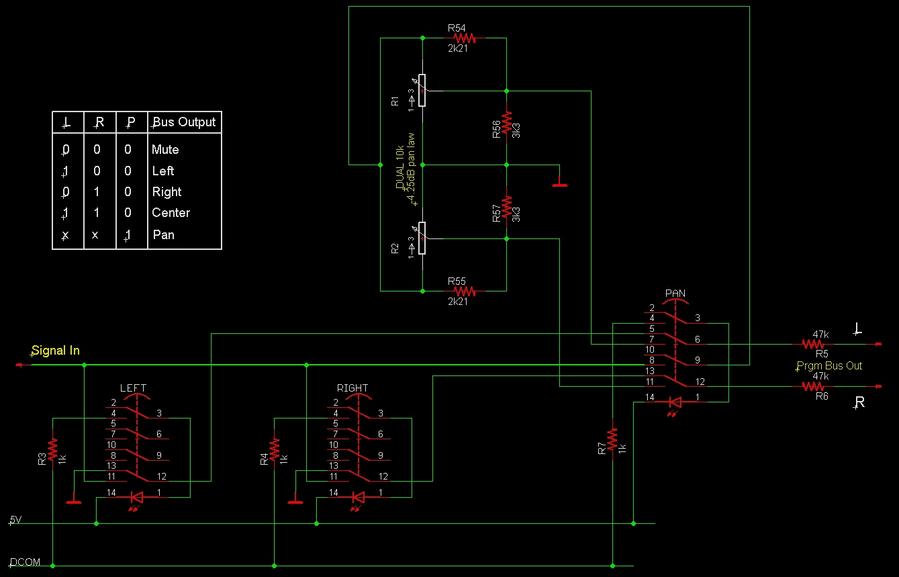If you get really clever, feed the VCAs from a dynamics sidechain as well.
boji said:
I can't even imagine what that would do! Are we talking dynamic pan/width ? Or just that it allows you to also have a dynamics processor included as part of the bargain?
OK, here's an overview of the whole thing.....
A pair of VCAs are fed from a common input.
The VCA outputs are left & right.
A common control voltage (from a physical fader or a DAC) varies the overall level up & down.
A pair of voltages from a physical panpot (or DACs) are used to offset the control voltages to the VCAs, giving you a pan function.
A mute switch slams, well, better if it rapidly ramps, the VCA control voltages to maximum attenuation, thus providing a mute.
Include a dynamics processor (compressor, limiter, expander, gate) in the signal path..... its control output would normally feed a VCA.... and we already have a VCA (actually a pair of VCAs) in the signal path.... so..... much use of control voltages, but only one pair of VCAs do all the work of level, pan, mute and dynamics. The devil is in the detail of how the control voltages are processed and presented to the VCAs.
The dynamics idea falls-down when we consider that the dynamics is effectively
post fade. This can, however, be mitigated by feeding a third VCA from the input signal and controlling it only from the dynamics circuit, thereby providing a pre-fader signal under dynamics control.
There are various tricks that can be incorporated to improve the depth of cut provided by the VCAs and also to improve the distortion performance through the VCAs.
Width control would require phase inversions and cross-coupled blending of the left & right signals, so it is not impossible, but requires more circuitry downstream of the panpot. This is only really effective on a signal that is already stereo.


































